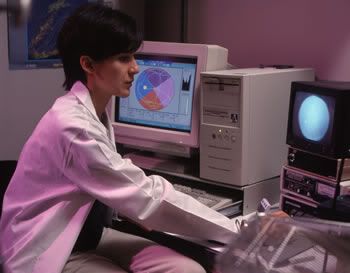Safety and efficacy of clobazam versus phenytoin-sodium in the antiepileptic drug treatment of solitary cysticercus granulomas.
Single enhancing lesions (SELs) are commonly noted upon imaging studies of young persons with new-onset seizures in several neurocysticercosis-endemic geographic regions. The lesions are believed to represent involuting solitary cysticercus granulomas (SCGs). Treatment policies vary between administration of antiepileptic drugs (AEDs) alone or in combination with a course of anthelminthic agents. Phenytoin-sodium and carbamazepine are the commonly used AEDs for seizure control in such situations. There is no published experience with other AEDs. We and other authors have reported the occurrence of cutaneous adverse reactions including anticonvulsant hypersensitivity syndrome (AHS) among individuals with SCG being treated with phenytoin and carbamazepine. Clobazam, one of the AEDs has been used in a variety of seizure disorders. It has the advantages of a rapid onset of action and minimal side effects, in particular allergic cutaneous reactions. In this communication, we report our preliminary experience with this agent in a prospective, randomized, open-label comparison with phenytoin-sodium. We sought to determine whether clobazam was well tolerated, safe and efficacious in the AED treatment of SCGs.
Discussion
This study demonstrated the superiority of clobazam over phenytoin when treatment discontinuation or modification (labeled as treatment failure) due to either adverse events or breakthrough seizures was used as an outcome measure. The major limitation of the study was its small sample size, which precluded ascertainment of the true magnitude of the effect studied and also evaluation of differences in measures of efficacy and safety, separately. Nevertheless, the size of this study had sufficient power to detect a 30% difference in the primary outcome with 90% confidence.
The AED treatment policies for SCGs remain unclear and guided by intuition rather than firm scientific basis. There are no clear guidelines for the specific AED to be used. A rapid onset of action is desirable, in view of that seizures are often clustered and accordingly there would a high risk of seizure recurrence in the immediate aftermath of a seizure. Clobazam appears to be suited to the AED treatment of SCGs in view of its rapid onset of action. Clinical experience shows it to be efficacious in the prophylaxis of acute symptomatic seizures and febrile seizures. The dose of clobazam used by us was based upon recommendations for its use in the prophylaxis of acute febrile seizures. The proportion of subjects reporting adverse reactions with clobazam in such doses compared favourably with proportion of subjects who reported adverse effects with phenytoin.
Phenytoin-sodium is perhaps most frequently used in the management of seizures due to SCG because of its rapid onset of action following loading dosage. However, it has been found to be associated with a high risk of allergic skin phenomena including anticonvulsant hypersensitivity syndrome. Under such circumstances, carbamazepine would also be unsuitable due to known cross-reactivity between the two agents in their propensity to cause hypersensitivity phenomena. Clobazam appears to be a useful alternative, in as much as it does not cause cutaneous adverse reactions.
The reader is cautioned against making any conclusions about the efficacy of phenytoin vis-à-vis clobazam, since blood levels were not estimated in event of breakthrough seizures; hence it could be possible that breakthrough seizures in the phenytoin-treated group were on account of sub-therapeutic levels of the agent.
It may be worth adding that phenytoin-sodium induces the metabolism of anthelminthic agents, thereby reducing their serum levels and potentially compromising their efficacy. Similar drug interactions have not been demonstrated for clobazam, though it would be pertinent to study the nature of interactions, if any between the drug and anthelminthic agents.
Phenytoin remains a primary option for seizure management, particularly in resource-limited countries, being widely available and inexpensive. According to calculations based on drug prices in India, a six-month course of phenytoin administered to a 70 kg adult would cost Rs. 8,050. In comparison, the cost of a six-month course of clobazam would be Rs. 39,600. However, one has to add to the cost of phenytoin treatment, hidden and overt expenditure incurred on treatment of adverse drug reactions including hospitalization and days spent off work.
Conclusion
This pilot, randomised, open labeled trial demonstrates the safety, tolerability and efficacy of clobazam in the AED treatment of SCGs. However, larger prospective comparisons that are blinded are required to make definite conclusions about its use in the management of acute symptomatic seizures not only due to SCGs and other conditions such as meningitis and encephalitis.




0 Comments:
Post a Comment
<< Home